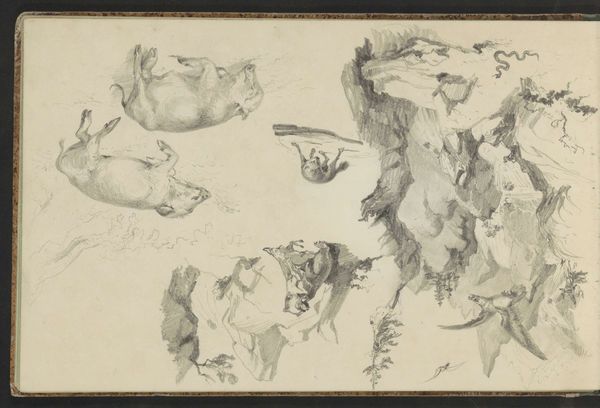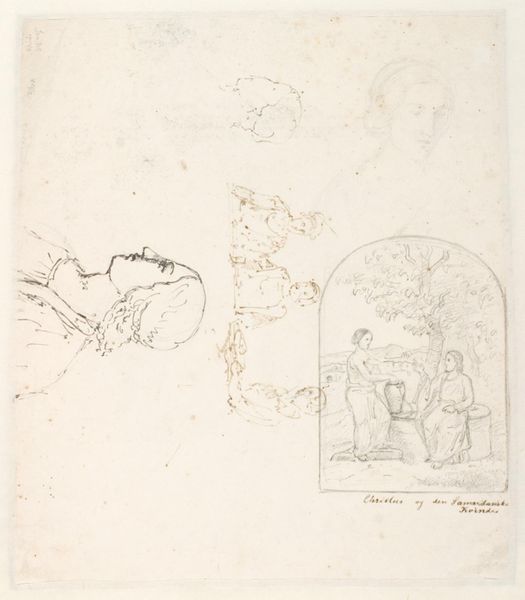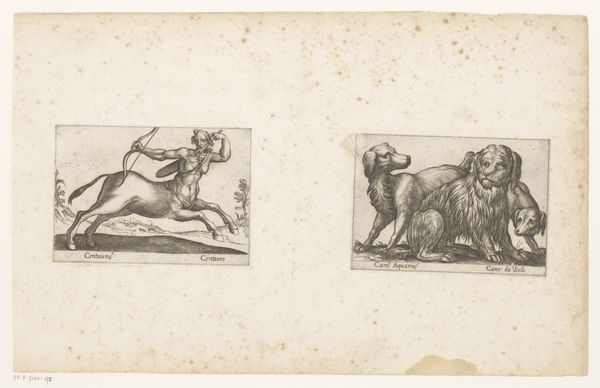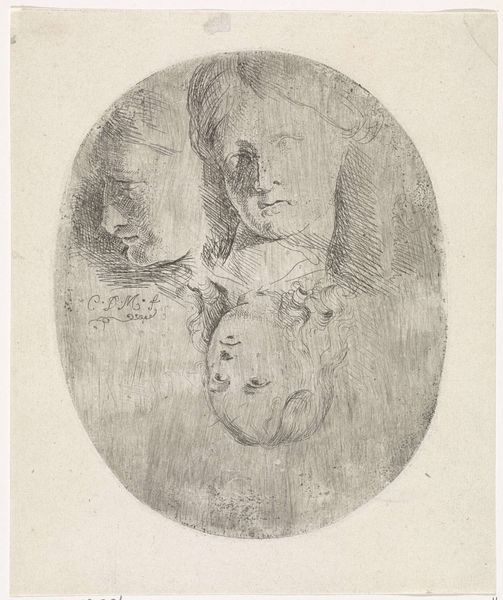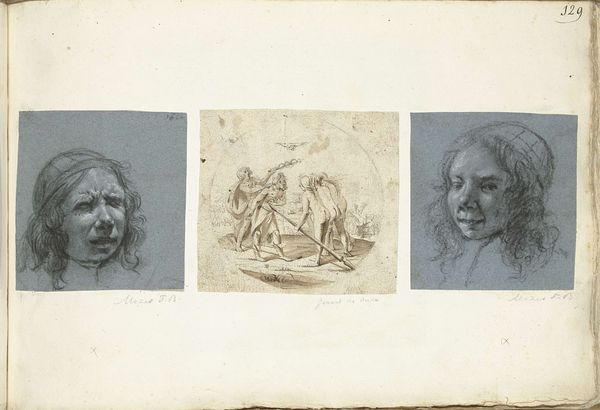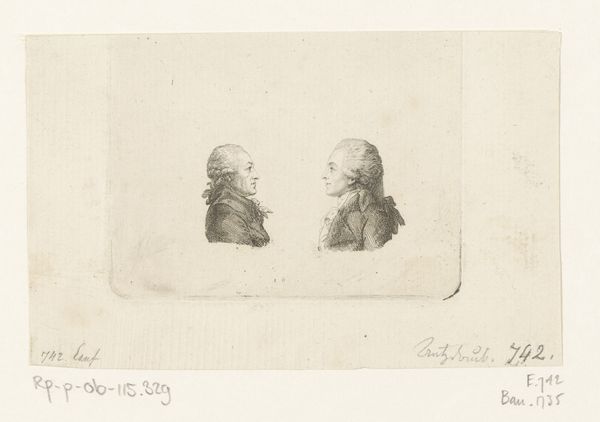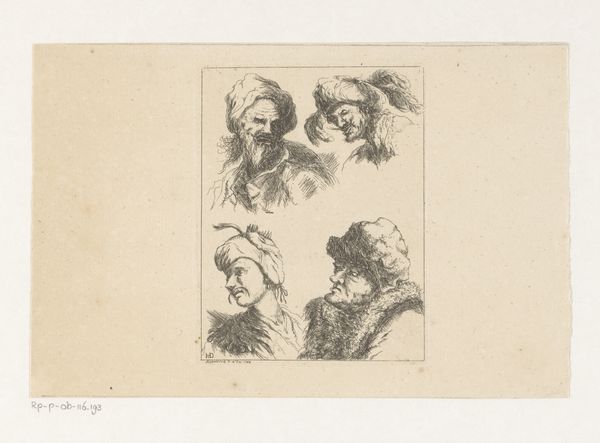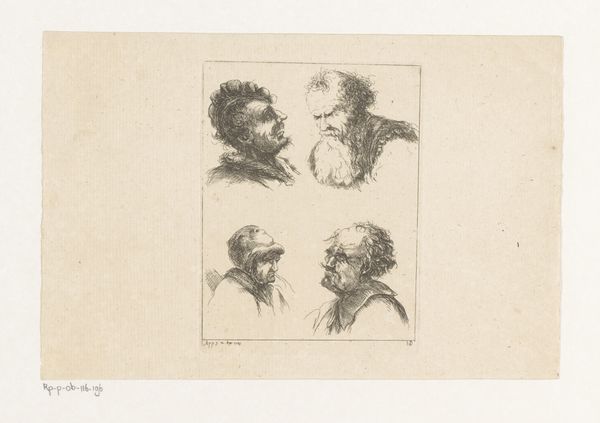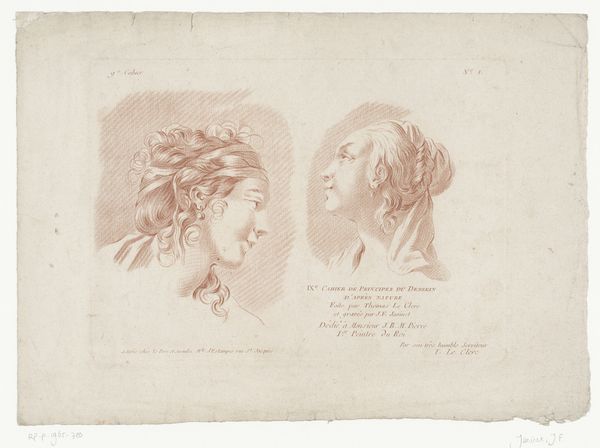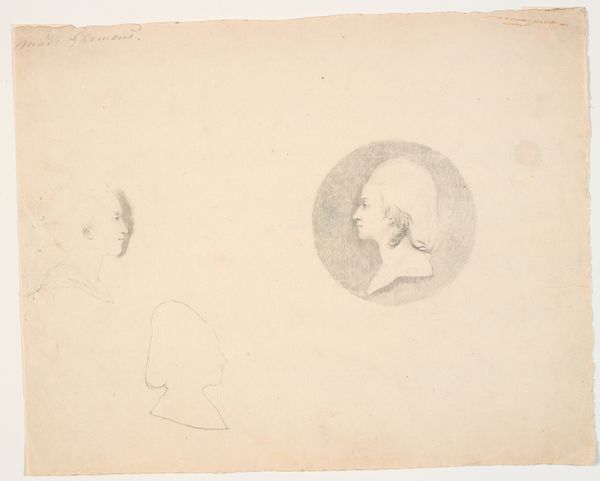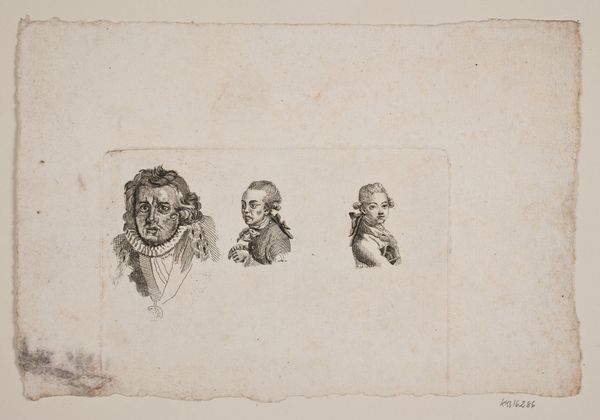
drawing, print, etching, pencil
#
drawing
# print
#
etching
#
pencil sketch
#
figuration
#
pencil
#
line
#
watercolour illustration
Dimensions: 174 mm (height) x 214 mm (width) (bladmaal)
Editor: This is Christian Piil’s "Prøveblad med mandshoved, løvehoved mm.," dating from around 1843 to 1847. It’s an etching and pencil drawing featuring studies of heads, a man and two animals. I’m struck by the way these different heads are presented almost scientifically, like specimens. How do you see this work? Curator: It's interesting you use the word "scientifically." In the context of 19th-century art academies, a sheet like this was both practical and deeply entrenched in institutional training. Students would meticulously copy and redraw from established models – be they human or animal – as a way to master form and anatomical accuracy. Does that affect how you view the image? Editor: That makes sense. So it’s less about personal expression, and more about developing skills within an academic framework? Was there an expected social function for such skills? Curator: Absolutely. The skills acquired through these exercises were foundational for creating the grand history paintings and public sculptures that reinforced national narratives and ideals. Think about it: these artists were crafting the visual language of power and patriotism. Can you see, for example, how the study of a lion might later translate into symbols of strength or regality within a larger allegorical work? Editor: I do, that connection between basic training and its potential application in propaganda is fascinating, especially how it quietly served to uphold certain values! Curator: Exactly. By understanding the institutional history behind works like this, we gain insight into the subtle but powerful ways in which art has shaped our collective understanding of history and society. I wonder, how will this guide your studies moving forward? Editor: It highlights the importance of seeing art as enmeshed in broader social and political forces, even something seemingly simple like a practice sheet. Thank you!
Comments
No comments
Be the first to comment and join the conversation on the ultimate creative platform.
